Alternatives from the periphery: Pierre-Olivier Rollin and the BPS22 (an interview)
How do global politics from the province look like? An interview with Pierre-Olivier Rollin, the director of BPS22 in Charleroi
The BPS22 (acronym of Bâtiment Provincial Solvay, n°22 boulevard Solvay) is the Art Museum of the Hainaut Province in Belgium. Inaugurated in 2000 as a space for contemporary creation at large, it’s been labelled a museum only since 2015. The BPS22 positions itself as one of the pioneers of the current cultural development of Charleroi, a town of 200.000 people with an important proletarian past and one of the former industrial hubs of Western Europe. Both the museum’s collection and the exhibitions hint at the specificities of this geographic and sociological areas, including a reflection on the very building where the museum is hosted.
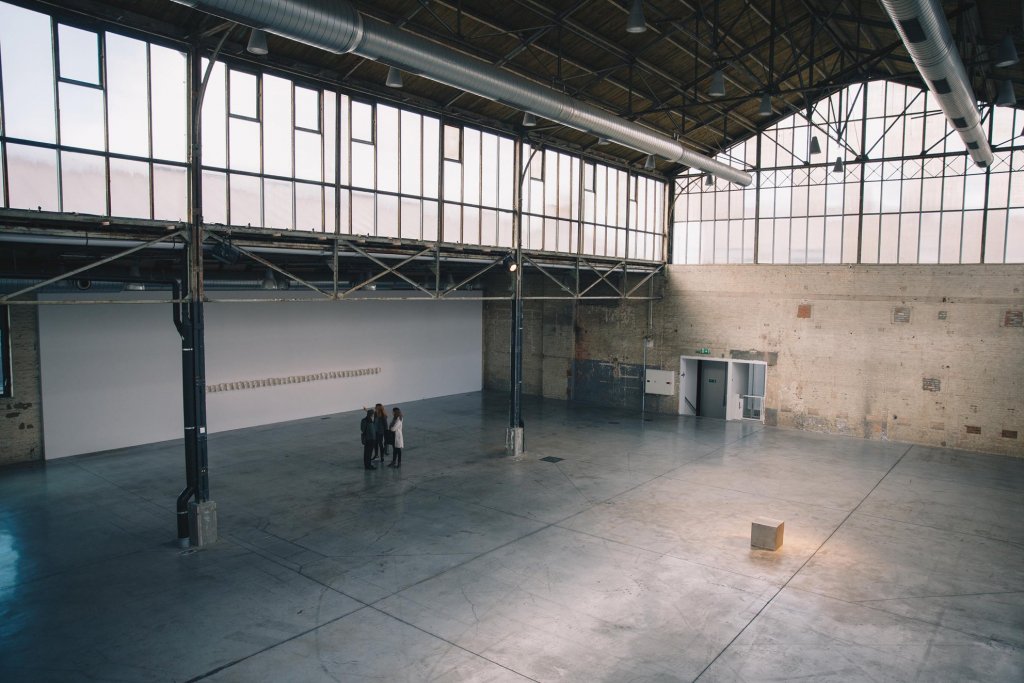
The program of the BPS22 follows the genealogy of subversion: from Surrealism to the Situationist International; from the punk movement in Belgium to cosmopolitan subcultures; from local to international artists engaging with political and social issues. Through a conversation with the BPS22’s director and curator Pierre-Olivier Rollin we speculate about the ways in which institutions can provide critical education and social elevation. We interrogate the possibilities of alternatives politics and social (real)- utopias within and beyond exhibitions and discursive programs.
[For more about the social role of museums, here is our interview with the Pinacoteca di Brera’s director James Bradburne. Ed.]
***
The curatorial approach of the museum seems to be oriented toward the quest for alternative political models. Exemplary is the exhibition The Worlds Turned Upside Down, which inaugurated the current status of the BPS22 in 2015, as well as the current shows of the historic feminist Margaret Harrison and the multilayered work of Petr Davydtchenko. Can you talk about these exhibitions and the curatorial program?
Pierre-Olivier Rollin: The Worlds Turned Upside Down was the opening exhibition of the museum after the building transformations. Its main reference is the book written by the American historian Christopher Hill titled The World Turned Upside Down: Radical Ideas During the English Revolution. Hill didn’t focus on the relations between the King and the parliament but looked at “history from below,” focusing on the ways in which the people of Britain saw the society they lived in and nurtured hopes for a better future. For instance, the title is from an old English protest song, calling an overthrow of the social order: the end of monarchy and the advent of democracy.
Reading writers like French François Rabelais, my idea was that popular culture, considered as “folk culture” rather than “pop culture”— the latter generally equates with mainstream culture—in all its manifestations implies a symbolic seizure of power by the dominated people. It suggests that other worlds, other political or economic organizations are still possible. Based on that idea, I selected contemporary artworks dealing with other social and political organizations.
From a curatorial point of view, I organised the exhibition like a “popular festival”, full of artworks that were very close to each other, as one of main traits of popular festivals is the idea of abundance. Popular culture normally expresses a lack, for example a lack of food, of representation, of power etc., and popular festivals symbolically compensate these lacks during a condensed space-time, like an exhibition. That’s why, in the end, the show looked like a huge festival of propositions for other worlds—a kind of Hakim Bey’s TAZ.
Concerning Petr Davydtchenko’s Perftoran exhibition, I wanted to have a critical point of view on our current pandemic. That’s why we adopted a minimalist display, a “political minimalism,” in order to favour a rational perspective on the current COVID-19 situation instead of an emotional one, as it’s always difficult to debate in extreme emotional situations.
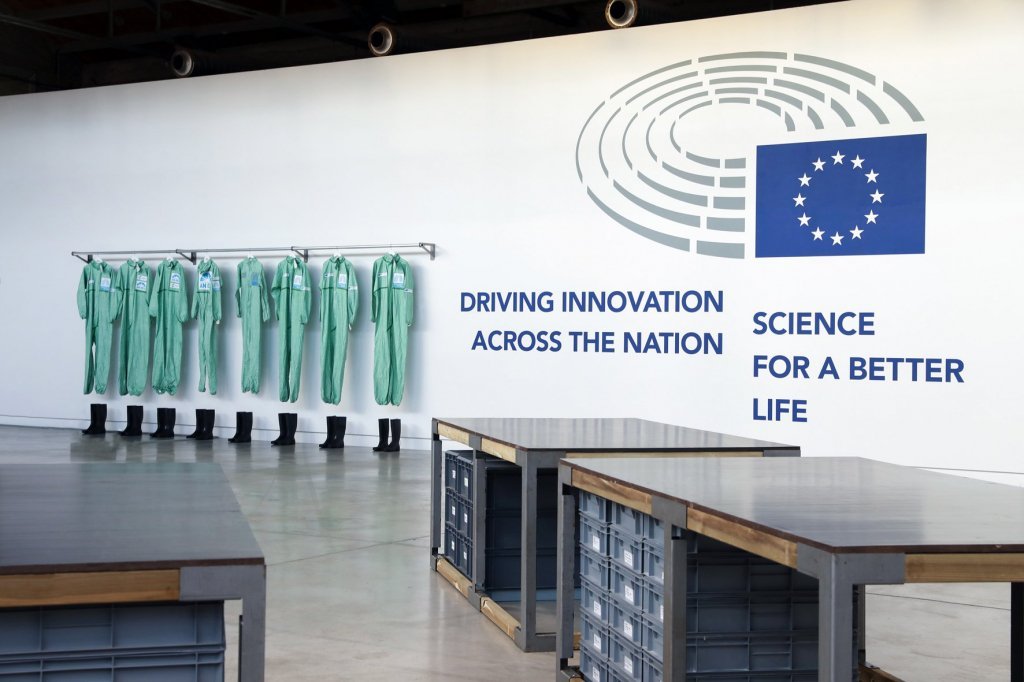
On the one hand, the BPS22 proposes “upside-down” models to approach the realities we live in. On the other hand, the experience of art proposed by the building cannot be delocalised from its architecture. How does the agenda of the museum combine the hybrid space composed by the industrial rough look of the large hall and the white cubes of the two wings?
Pierre-Olivier Rollin: The BPS22 is located in an old industrial building erected at the beginning of last century. The museographical concept was to create two specific spaces determining two specific relations to art: in the first wing, a classical white cube determined by Brian O’Doherty’s trilogy Timeless, Atopism and Asepsis, a kind of modernist temple dedicated to the ideology of the masterpiece, suggesting a common experience of art that is the same anywhere and anytime; in the other wing, an industrial building, looking like an industrial cathedral made of steel, glass and concrete, and rigorously oriented East-West. In this space, the circular contexts around the building are influencing the perception of artworks by capillarity across the building. The meaning percolates across the walls. The walls and the ground still carry the scars of the past activities, including past exhibitions.


Charleroi has a long history of socialism. How do you conceive the future of art following this genealogy, especially by considering the difficult condition of art production nowadays? We here refer to the alliance between museums and independent, artist-run institutions, which you promoted through your collaboration with The Foundry in Maubourguet (France), an art space and artist community directed by artist Andrei Molodkin. Can you tell us more?
Pierre-Olivier Rollin: The collaboration with a/political [Molodkin’s partner organization. Ed.] was an amazing opportunity for us. It’s a non-profit organization, based in London, sponsored by private funds. They have a collection that’s very complementary to ours. That’s why I decided to invite the director Becky Haghpanah-Shirwan to curate an exhibition in Charleroi in 2019, which was titled Us or Chaos.
Through a/political, I rediscovered the work of Andrei Molodkin and I immediately decided to invite him for a specific project at the BPS22. This project was closely conceived in relation with the one he conceived for Rua Red in Dublin. It radically delved into the censorship of drill music groups—drill music is a very violent subdivision of rap—in Great Britain. His strong installation with blood and video was at the service of a subtle reflection about our democracies.
Molodkin later introduced me to Erik Bulatov, whom I believe is the most radical conceptual painter. Born in 1933 he crossed the 20th century, living World War II, Stalinism as well as European democracies after the fall of the Berlin Wall. Despite his different experiences, he never deviated from his way of doing. He was able to formulate very complex ideas about liberty and oppression with apparently simple paintings.
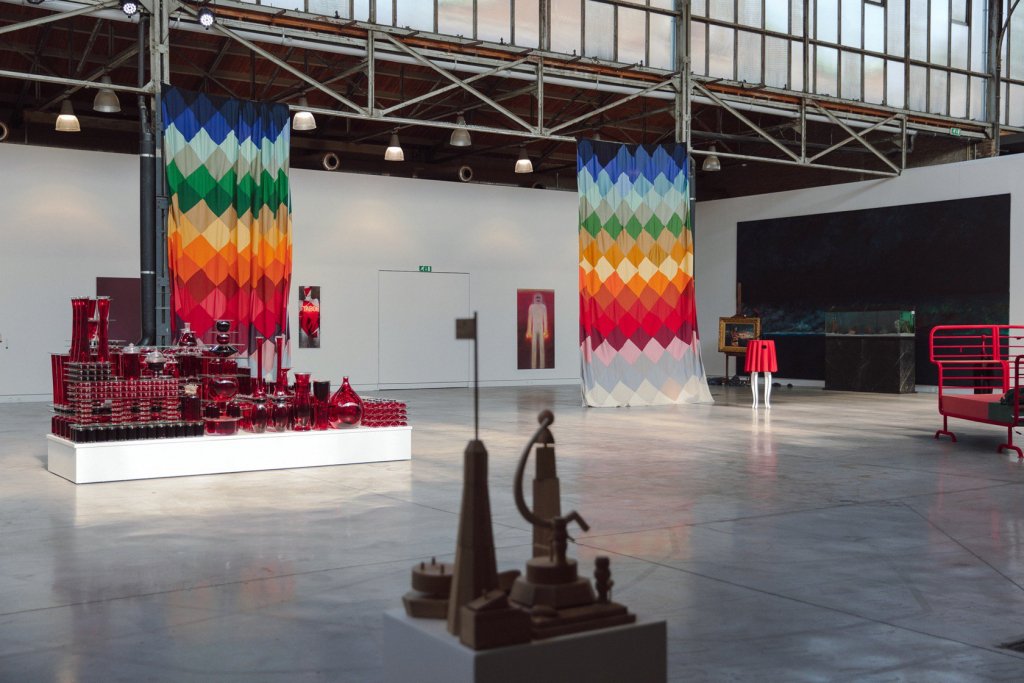
From the initial and inherited collection of the Hainaut Province, the collection of the BPS22 has enlarged notably through the acquisition of numerous documents on punk visual art in Belgium, on local production and international artists often in dialogue with local history, for example Kendell Geers. Can you explain more about the acquisition process? What is the role of social education in the collection? What is the relationship between the inherited collection and the museum’s exhibition program?
Pierre-Olivier Rollin: We don’t have enough space to show the collection permanently, but even if we did, we wouldn’t, as we consider the collection as a material to create specific exhibitions. A few years ago, I curated a show of collection works titled Uchrony. It was a way to tell another history of art, with other classifications considered as chapters of the show: Black Sun, Neo Gothic, Political Mythologies, etc. Recently my collaborator Dorothée Duvivier has curated a show of recent acquisitions titled Ludd’s Anger, which explored the idea of dispossession of low social classes. We try to build the collection with the same spirit: artworks that deal with global issues from a located and contextualized point of view. I’m inspired by the concept of creolization from Edouard Glissant, as it clarifies how to resist international globalization while avoiding local identitarian narrow-mindedness. For example, Belgian punk documents were an opportunity to develop a new history of art inspired by Greil Marcus’ Lipstick Traces.
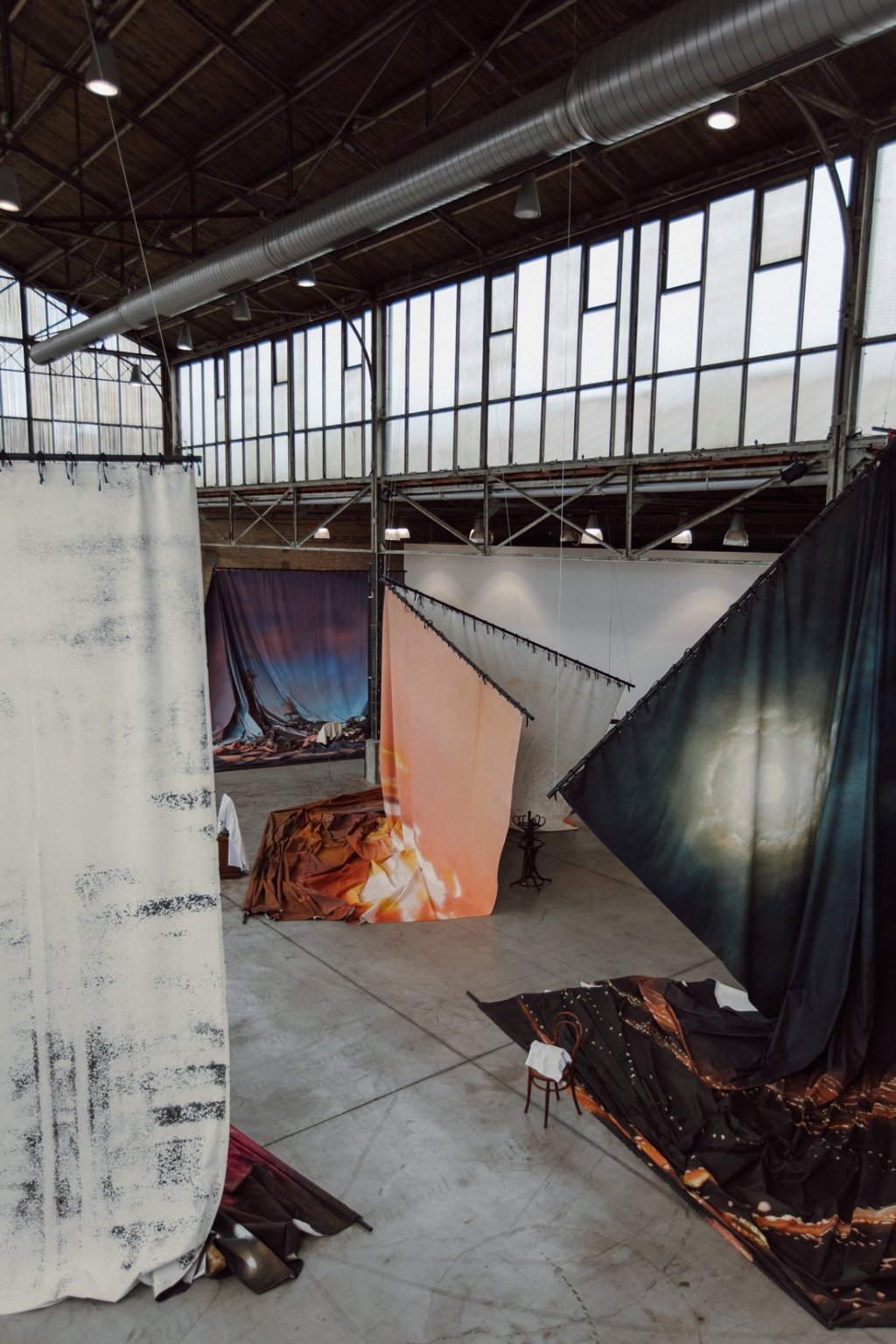
The renovation of the building as a “manufacturing of a tool” in 2014, as well as the exhibitions as a pedagogical and critical dispositif for the production of knowledge: this is the driving agenda of a museum aiming at social-democratic development. In this frame, how do you position different exhibitions such as Us or Chaos (2018-19) and the solo show of Latifa Echakhch (2020)? Can you talk more about the exhibition program in relation to these?
Pierre-Olivier Rollin: The exhibition program focuses on artists that are dealing with present global issues but with a specific attention to their local applications. Us or chaos, curated by Becky Haghpanah-Shirwan was an opportunity to explore the dual theme of order and chaos, as well as the way we react to it. Inspired by an anti-riot policeman’s retort to a member of the Spanish artists collective Democracia, the exhibition took a look at control techniques and resistance strategies, attempts to order chaos, tendencies to challenge the prevailing order.The Sun and the Set, curated by Dorothée Duvivier was an opportunity to reflect on the transformation of the city of Charleroi through the works of Latifa Echakhch, who is fascinated by intermediary states of things: between creation and destruction, and their memory. The artist was inspired by an old factory in Charleroi, meaningfully called “La Providence”, still in a phase of complete dismantling and which also inspired Teresa Margolles for her solo exhibition in 2019.
During your studies you did some research into African subcultures and art. How does this field influence your current interests? How do you combine these studies with the Charleroi context?
Pierre-Olivier Rollin: I have been interested in African contemporary art since the 1990s. Back then I met Fernando Alvim, Simon Njami and the German collector Hans Bogatzke, one of the first collectors of contemporary African artists like William Kentridge, Pascale Marthine Tayou, Ingrid Mwangi, Kendell Geers, Berni Searle or Olu Oguibé. At the beginning of the 2000s, the BPS22 was offered the opportunity to present Bogatzke’s collection in Belgium in the frame of a large international project called Next Flag. Reexistencia cultural generalizada.
In retrospective, I trace my interest for African artists to my larger interest for the forms of creation produced by what I call “invisible people,” by which I mean communities that are not very present in the art world. For instance, in 2008, when the BPS22 was invited to take part in the only edition of the Brussels Biennial, I decided to invite the Moroccan artist Mounir Fatmi. For me, his participation was an opportunity to think about the causes and the consequences of the invisibility of the minorities on the Belgian art scene. They were present in sport, politics, etc. but not in the Belgian culture world, except for a few exceptions like Charif Benhelima or Sidi Larbi Cherkaoui. Why?
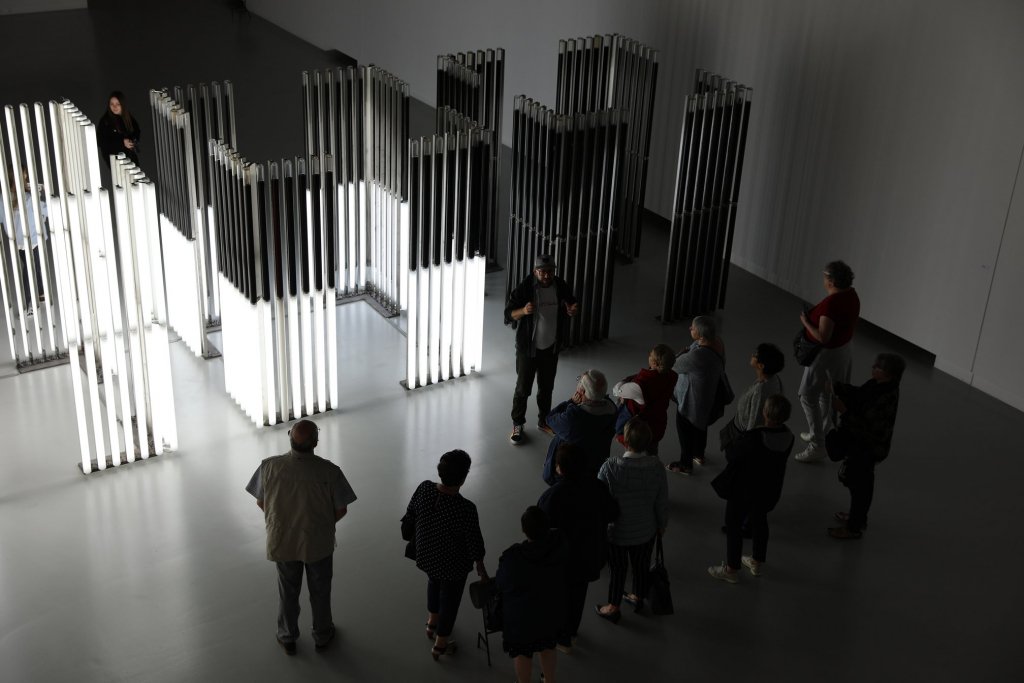
Collaborations, transformations of the art production, de-centralisation, educational program and socially oriented practices are more and more urgent modalities in the art context, turned particularly evident after the pandemic. Do you think that the approach of the BPS22 can also flourish in other contexts within this transformative time? And what kind of change do you envision for art institutions?
Pierre-Olivier Rollin: The “festival format”, that is, a large amount of people in a short period of time and in a limited space, a format made popular by art fairs, the professional days of the biennials, or even the opening of a small art center, was jeopardized by the pandemic. I don’t know how it will survive or how it will transform. For the peripheral institutions, those that are working with smaller financial budgets and are located in peripheral areas like the BPS22, things will not really change. The importance of these realities might be even strengthened in fact. Similarly to non-profit institutions like The Foundry, the BPS22 is developing an art model based on a circular and local economy. The clearest example is to favour local and clean production with artists rather than expensive transports which are also catastrophic from an environmental point of view. The circular economy will be one of our ways to continue.
May 10, 2021
